HSP HISTORY Blog |
Interesting Frederick, Maryland tidbits and musings .
|
|
When one commonly thinks of Brunswick, Maryland today, they likely envision a peaceful town, steeped” (both literally and figuratively) in railroading history, baseball, and plenty of outdoor recreational opportunities tied to the Potomac River and adjacent C & O (Chesapeake & Ohio) Canal towpath. Today’s solitude is a deep throwback to a much earlier time in the area’s existence, before its amazing transfiguration into a bustling transportation corridor for almost 250 years. Roots stretch back to 1728, when Indian trader Abraham Pennington operated his post on a tract named “Coxson’s Rest,” near the location of today’s Lock 30 (of the canal). This was a narrow, riverfront property stretching nearly three miles along the Potomac and one mile inland. Other frontiersman and government officials simply called this place Pennington’s, as it was a lone beacon amidst a vast wilderness environ of marshy mud flats, not unlike the famed bayou country of Louisiana. In the preceding few decades, the shores from current day Brunswick to the Monocacy Aqueduct served home to settlements of the Tuscarora and Piscataway native peoples. During this habitation, earlier place names for Pennington’s vicinity were based on memorable animals-in-residence—“Eel Pot Flats” and “Buffalo Wallows.” 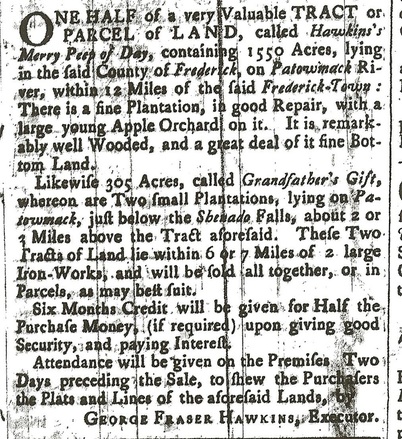 Maryland Gazette (August 1, 1765) article announcing sale of Hawkin's Merry Peep O' Day by George Fraser Hawkins (son of John Hawkin's Jr.) Maryland Gazette (August 1, 1765) article announcing sale of Hawkin's Merry Peep O' Day by George Fraser Hawkins (son of John Hawkin's Jr.) The geographic area that would eventually become Frederick County (but not until 1748) was getting noticed by powerful land speculators from the long established southern portion of the colony. Abraham Pennington, born in Cecil County ca. 1670, had devised a water ferry at Coxson’s Rest. This would launch a long line of ferry operators, including a wealthy native southern Marylander by the name of John Hawkins, Sr. (1713-1758). Hawkin’s took the reigns from Pennington when the latter departed for Virginia, eventually dying in South Carolina in 1756. This shallow, portage spot to the Virginia colony became the “Chesapeake Bay Bridge” of its day. The importance of place was recognized by adventurous early European settlers heading south and westward as “German Crossing” and “Potomac Crossing.” In 1753, the aforementioned John Hawkins, Jr. supposedly received a grant of 3,100 acres in the southernmost eastern tip of Middletown Valley from King George II of England. Another colorful name would abound for the Brunswick area as the grant went by the name “Hawkins’ Merry Peep O’ Day.” Having nothing to do with marshmallow candy whatsoever, this land title is said to have derived from the romantic image of an early morning sunrise view looking eastward from this vantage point, with the sun gradually “peeping” over Catoctin Mountain. John Hawkins, Jr. died in 1758 and his property was conveyed to his sons. The property sifted through multiple owners, as did the popular ferry. One of the interesting owners of this period was a man named Christian Slimmer who operated from the Virginia shore on lands formerly owned by British Parliament member Charles Bennet, 3rd Earl of Tankerville (1716-1767). In 1778, Slimmer had received his license from the Virginia legislature to operate his aptly named “Tankerville Ferry” to the Maryland side. In the process, the area is said to have taken on the name of Tankerville for a duration.  A 200 acre section of Hawkin’s “Merry Peep O’ Day” property would eventually wind up in the hands of Leonard Smith in 1780. Smith can be linked through his mother’s side to his namesake Leonard Calvert, first governor of the Maryland colony. He likely came to Frederick County in the 1750’s from Charles County, but was born in St. Mary’s County, Maryland in 1732. He likely was living on Carrollton Manor as his wife was related to the Carroll and Davis families. In the fall of 1774, Leonard Smith laid out “New Town” for a widow named Eleanor (Combs) Medley. Leonard Smith sold a large number of these lots the day after widow Medley died in January 1775, with the first lot going to his brother-in-law Charles Neale. “New Town” would soon wear the name of Newtown Trap, Traptown and simply Trappe because it earned the reputation of being a “very tough place,” where travelers were often waylaid and assaulted and “sometimes foully put out of the way.” In 1831-32, Newtown Trap was incorporated and received the new name of Jefferson. Not too much else is really known about Leonard Smith. He was married to Elizabeth Neale, a great-granddaughter of Captain James Neale (1615-1684) of "Wollaston Manor" (an early Maryland land grant bequeathed by the Crown in 1642). The Smith and Neale families were among Maryland’s early Catholic gentry, land were large plantation owners that utilized slave labor. Leonard Smith, like others of his pedigree, saw opportunity for investment and prestige in the fledgling Frederick County. During the American Revolution, Smith served with other “men of mark” who had come to Frederick with similar aspirations. He served on the committees of Safety and Observation for Frederick County with great patriots such as Thomas Johnson, Jr. John Hanson and Dr. Philip Thomas. Leonard’s son Captain John Smith (1754-1805) served with distinction in Maryland’s Flying Camp. In 1780 Leonard Smith now used a part of his acreage to establish the small town that eventually became known as Brunswick. By 1787, he had surveyed ninety-six lots and gave the place a new name, “Berlin.” This was most likely done to attract Germans settlers, many of which had been passing through for over five decades en route to Virginia, the Shenandoah Valley and points west such as the land destined one day to become Kentucky. Smith sold at least forty-seven of these lots before his death in 1794. His descendants eventually sold the remaining lots. Thanks to its location near the river, Berlin soon became a small trading center, boasting a flouring mill and carrying on trade with the surrounding farms in the area, not to mention Virginia neighbors across the river and the inhabitants of nearby Harpers Ferry, home to the United States Arsenal. 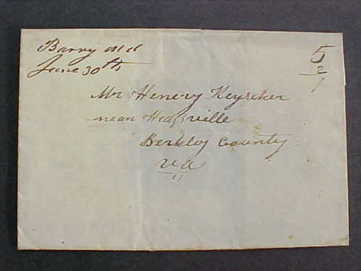 Letter sent from Barry, Maryland, dated June 30th, 1849 Letter sent from Barry, Maryland, dated June 30th, 1849 Berlin grew large enough to warrant a post office in the year 1832. At this time, the town was christened with a new name, “Barry.” The change was made to avoid confusion with the town of Berlin found in Worcester County, just inland from Ocean City. The townspeople were not impressed and went on referring to their town as Berlin, but accepted Barry as the name for the post office. 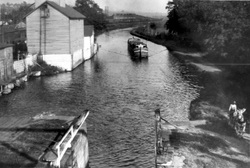 Exciting times were on the horizon because in 1834, two new travel innovations would come through town along the river’s edge. Berlin first and foremost became a bustling “canal town” as the Chesapeake & Ohio Canal connected it with Georgetown and the nation’s capital. The Baltimore and Ohio Railroad would have its rails here, but was more of a pass through than anything else. That would certainly change as the century progressed. In subsequent years, warehouses would be built and service industries catered to the canallers, meanwhile, Berlin was enduring land grabs of “right of ways” by the two transportation giants, only to be followed with skirmish raids by Confederates from across the river during the American Civil War. In fact, a wooden covered bridge across the Potomac was destroyed in 1861, just two years after its construction—quite a blow. After the Battle of Antietam, the Union Army used Berlin as a major supply depot due to its pivotal location, and was forced to construct a pontoon bridge to move troops and materials across the river into Virginia. 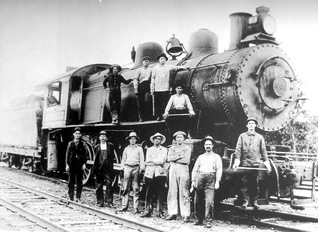 Tensions eventually waned, and the town was eyed to play a larger role for the B&O. In 1890, the railroad decided to move its extensive freight yard operation from Martinsburg, West Virginia, to Berlin. The boomtown phenomenon took hold and a population of 300 in 1890 would soar to 2,471 in 1900, and over 5,000 inhabitants by 1910. Brunswick and its new housing sprawled over the adjacent hills (Wenner’s Hill, New York Hill, Fitzgerald’s Hill, Brick Yard Hill and Sandy Hook Hill). This time around the railroad would be more stringent than the post office. A name change was necessary to keep passengers and freight from going to the wrong Berlin, Maryland. An act of legislature on April 8, 1890 changed the town’s name yet again. This time it became Brunswick. On the bright side, the act officially incorporated the town and instituted the current mayor and city council form of government. It also established town boundaries. However, more bad news came for many citizens as the act prohibited the sale of liquor. The railroad truly shaped the town in its own image for the better part of the 20th century. This gave rise to the unofficial name of “Smoketown” for Brunswick. And from there, as they say, the rest is history. Today, Brunswick is a “Main Street Maryland” community, boasting several shops and eateries to go with its amazing transportation heritage story. A revitalized, historic downtown center and array of special events such as the annual “Railroad days” celebration beckons visitors from near and far. 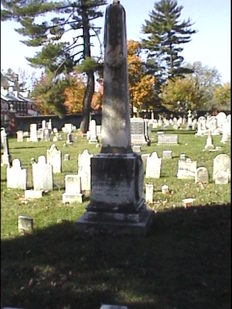 Grave of Leonard Smith in St. John's Catholic Cemetery (Frederick, MD) Grave of Leonard Smith in St. John's Catholic Cemetery (Frederick, MD) But what can be said of the town’s founder, Leonard Smith? He could have applied his own name, “Smithtown” to the vicinity, but he didn’t. Smith died in 1794, while his Berlin was still in its infancy. He would originally be laid to rest in Frederick City’s Jesuit Novitiate grounds. Today, an impressive monument can be found over his mortal remains in St. John’s Cemetery. Interestingly, Smith is really nothing more than a footnote today, as no statues or street names immortalize him in either Brunswick or Jefferson, the town’s he put into being. However, his children and descendants are remembered for their roles with the family’s beloved Catholic Church. Smith’s daughter Jane (1774-1841) would join Elizabeth Ann Seton’s Daughters of Charity in Emmitsburg, taking the name of Sister Mary Joanna. She is buried in the historic cemetery on the Seton Shrine grounds. 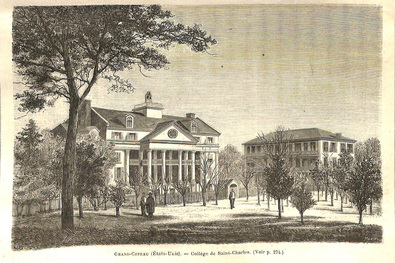 St. Charles College in Grand Coteau, Louisiana St. Charles College in Grand Coteau, Louisiana Three of Leonard Smith’s sons actually sojourned to authentic bayou country—Louisiana. Following their father’s death, Charles, Benjamin and Raphael Smith went to the vicinity of Grand Coteau, St. Landry Parish (located midway between Opelousas and Lafayette, Louisiana). The brothers became large plantation owners and Charles Smith, in particular, made the greatest contribution to the area. In 1819, he donated several parcels of land to be used for a cluster of various church structures, giving shape and purpose to the little community. Out of this would come St. Charles Borromeo Church and grounds, plus generous expanses of property in 1821 that would provide pastoral settings for the Academy of the Sacred Heart and in 1837, St. Charles College (now a Jesuit seminary and retreat house). These were purposefully named in Charles honor, and so was the town as it was originally called St. Charles Town before being changed to Grand Coteau. Grand Coteau is derived from French, meaning “great hill.” I guess this opens the door for yet another possible name change for Brunswick in the future, as it is a city built upon a great hill, isn’t it? Just an idea. (AUTHOR'S NOTE: FaceBook’s “Smoketown History (Brunswick, MD)” page by Clay Thomas & Nancy Merchant Langley is a terrific site for town heritage stories, photos and reminiscing of yesteryear). Also be sure to check out the Brunswick Heritage Museum. Thanks also to Brunswick Main Street's website for a few of the vintage images.
0 Comments
Leave a Reply. |
AuthorChris Haugh Archives
February 2024
Categories |
Proudly powered by Weebly

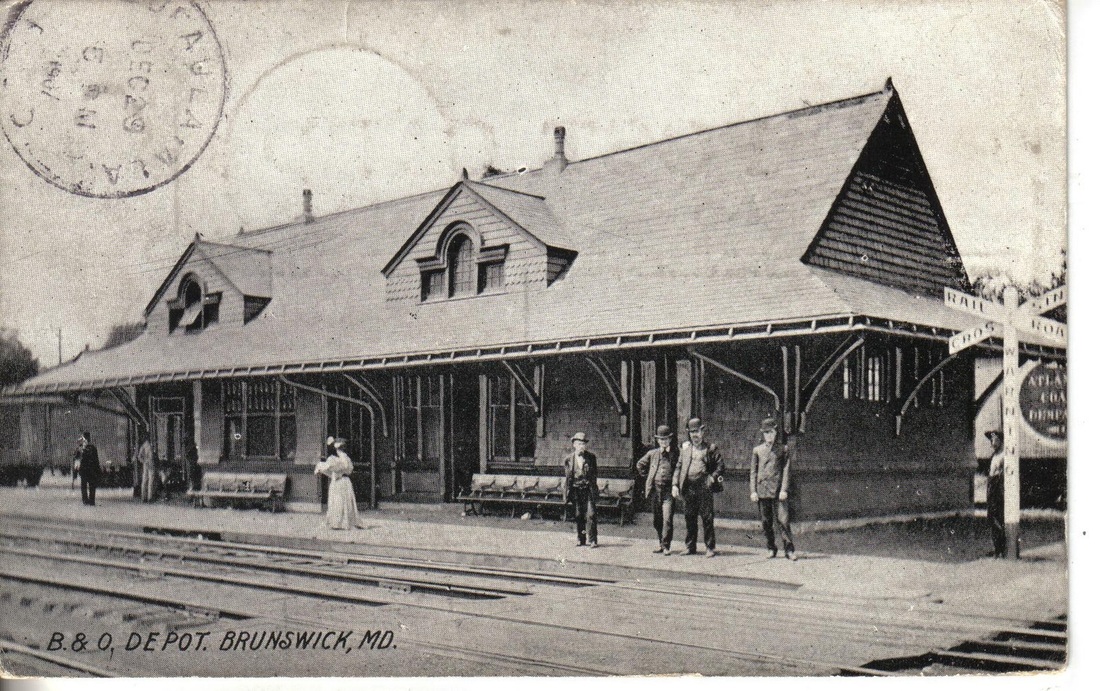
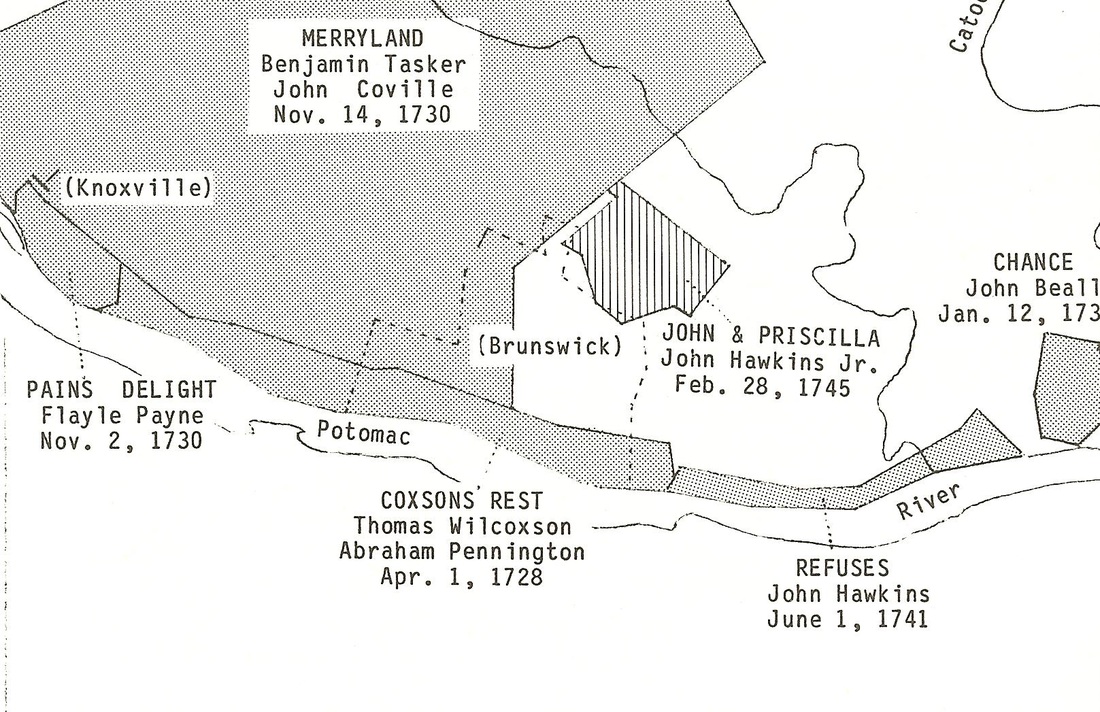
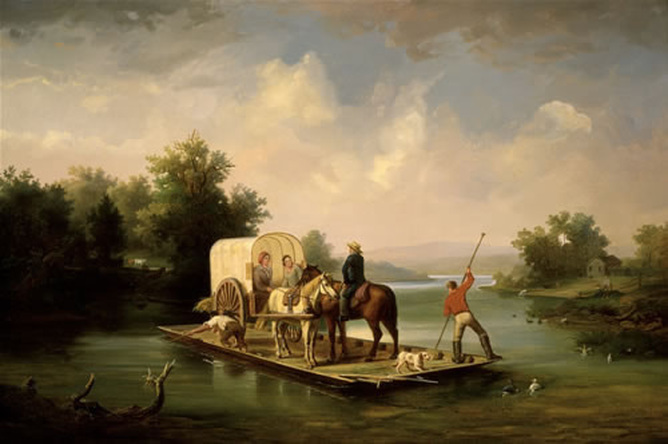
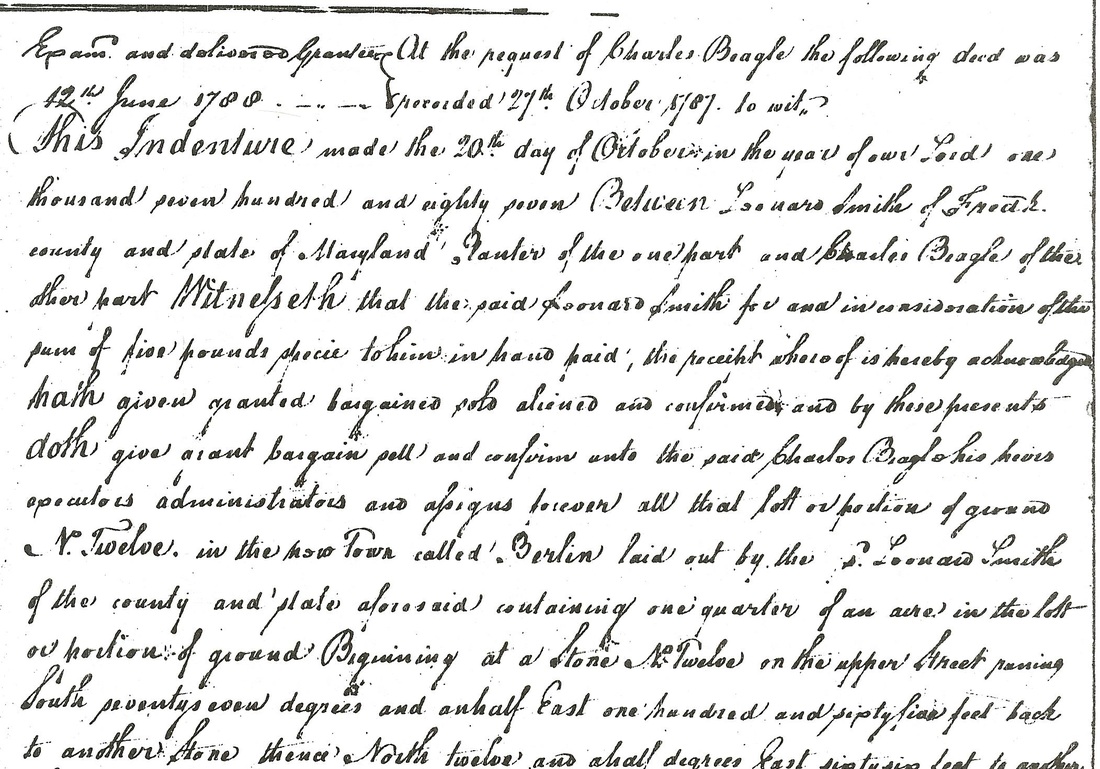
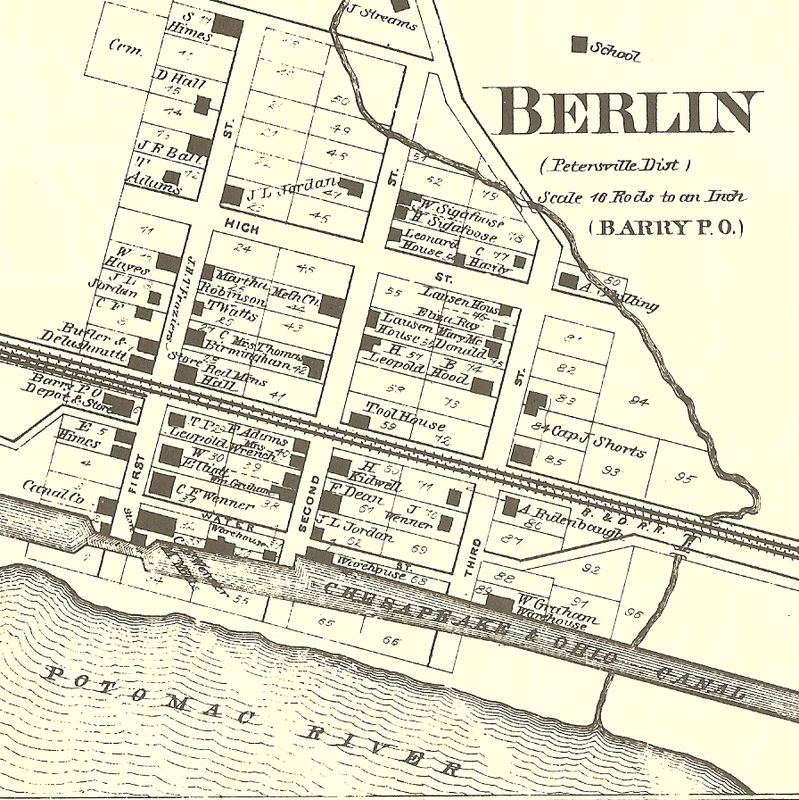

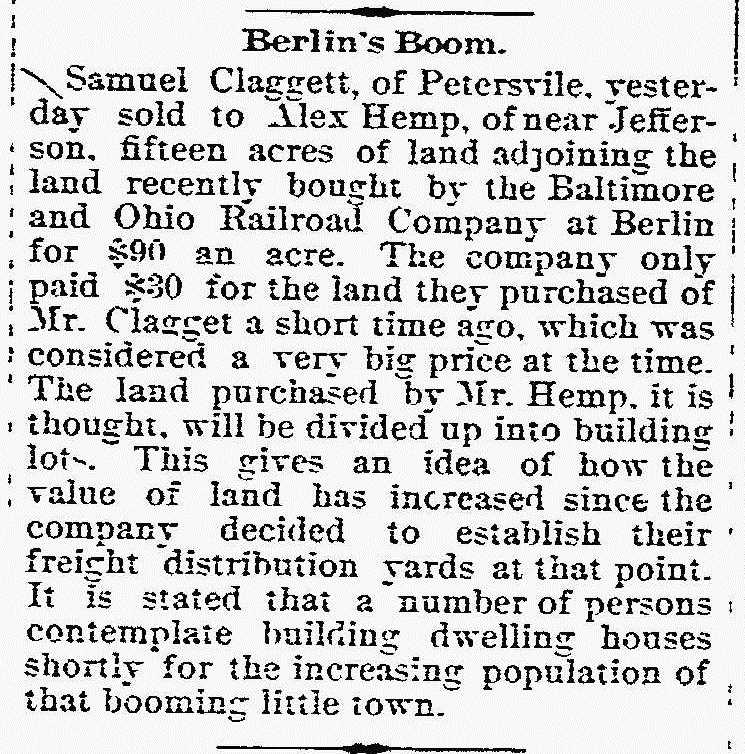
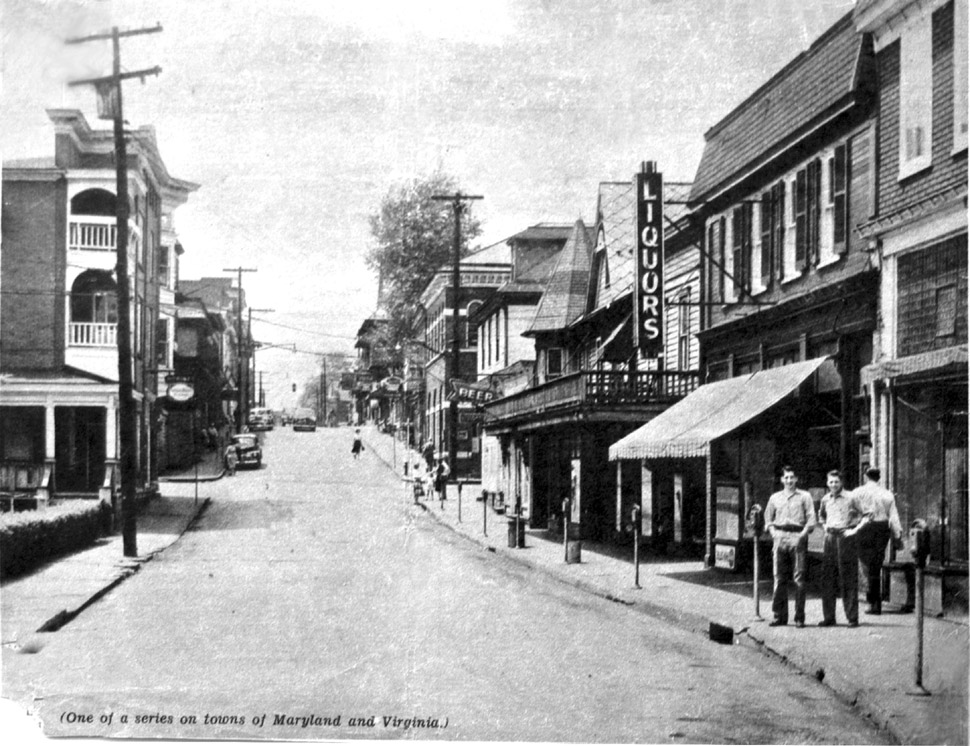
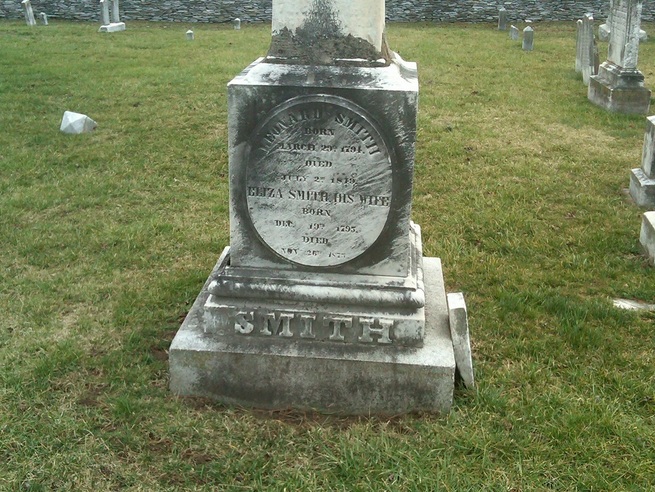
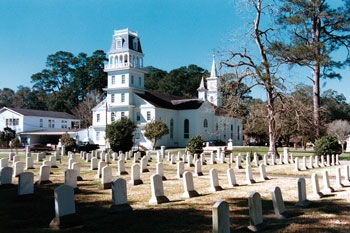
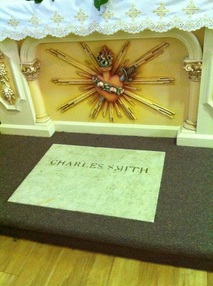
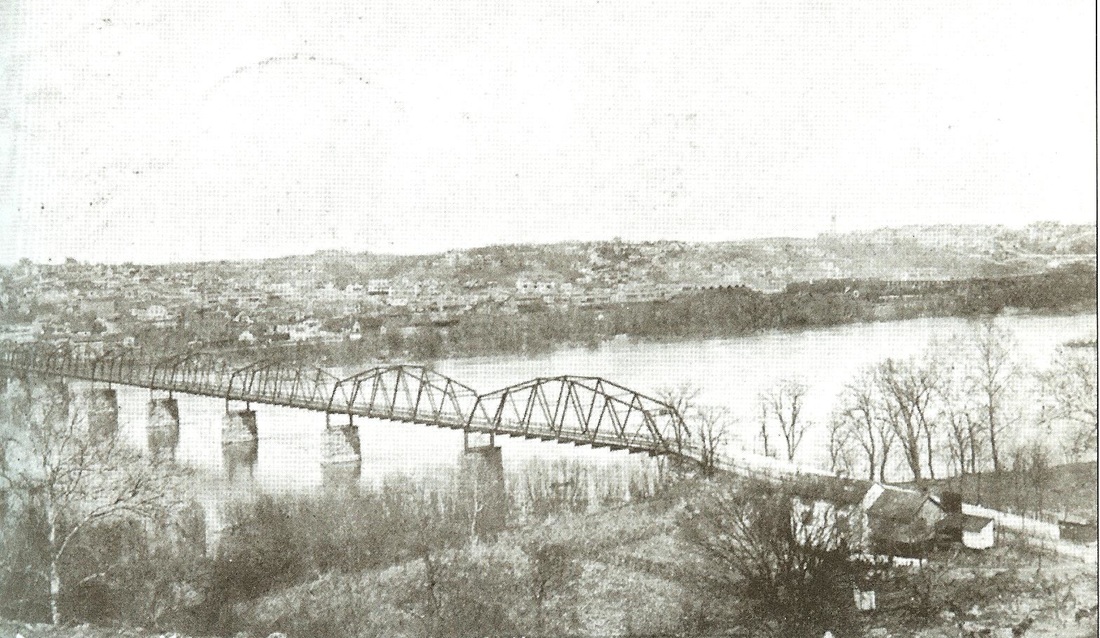
 RSS Feed
RSS Feed